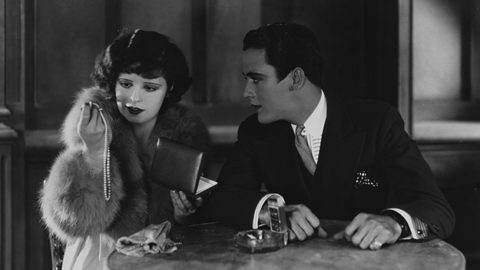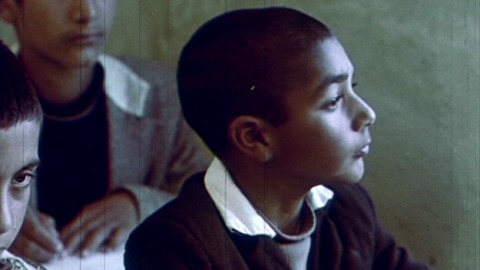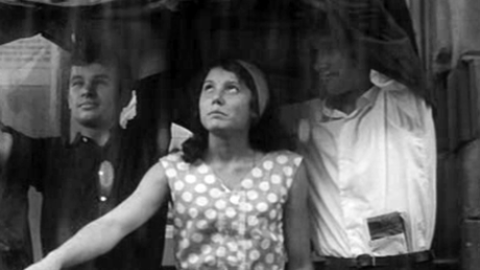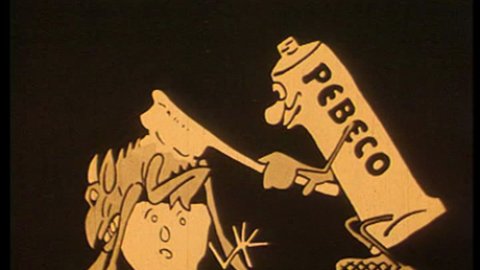Festivals: The San Francisco Silent Film Festival
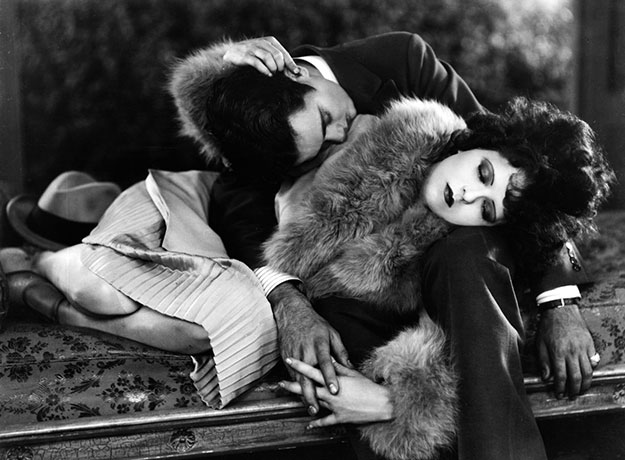
Get Your Man
In a summer when Wonder Woman was hailed in some quarters as a milestone for women in cinema, the audience watching Filibus (1915) at the San Francisco Silent Film Festival could be forgiven for wondering sardonically if movies are finally catching up to where they were a century ago. An Italian film serial in the mode of Feuillade’s Fantômas (1913), Filibus stars the charismatic Cristina Ruspoli as the titular “mysterious air pirate.” A crafty criminal who appears to be motivated solely by joie de crime, Filibus floats around in a futuristic airship staffed by loyal male minions, descending to earth to steal jewels and torment her nemesis, a respectable monocle-wearing detective. Ruspoli is gracefully androgynous and slyly gleeful as she flits between several alter egos, posing as the soigné Baroness Troixmonde and, in drag as the Count de Brive, mischievously courting the detective’s sister. Directed by Mario Roncoroni, Filibus zips along with crisp, deliciously absurd plotting and an effervescent lightness of touch, amid gorgeous seaside locations that shimmer in EYE Filmmuseum’s pristine, color-tinted restoration. Alas, only five short episodes of the serial were made before World War I shut down much of the Italian film industry.
Filibus was an audience favorite, but far from the only film in the 22nd annual San Francisco Silent Film Festival that featured an unapologetically dominant female star. Two were also directed by women: Dorothy Arzner’s Get Your Man (1927), a snappy vehicle for the turbocharged charm of Clara Bow, and Lois Weber’s The Dumb Girl of Portici (1916), a grandly scaled historical epic powered by the kinetic expressiveness of the Russian ballerina Anna Pavlova. Ernst Lubitsch’s playfully stylized The Doll (1919) is a comic tour-de-force for German star Ossi Oswalda: even as she embodies the film’s risqué central joke—her character impersonates a mechanical doll purchased by a gynophobic young man who must marry in order to inherit—she is more puppeteer than puppet, pulling the strings and sharing her private amusement with the audience. The peerless Louise Brooks stole the show with a tantalizingly brief appearance in the roughly 20-minute fragment of a long-lost aviation comedy, Now We’re in the Air! (1927), recently discovered by festival board president Rob Byrne in the Czech Republic’s National Film Archive. Though her role is essentially decorative, Brooks’s appearance in a black leotard, tutu, and sleek helmet of dark hair, is incandescent enough to start a nitrate fire.
Brooks retains a cult following today, but many silent stars have been completely forgotten, and some—Priscilla Dean, for instance—richly deserve to be rediscovered. Director Tod Browning is known for his 10-film partnership with Lon Chaney, but while Chaney appears (as two different characters) in Outside the Law (1920), he’s overshadowed by Dean, with whom Browning made nine films between 1918 and 1923. Amazonian in stature, Dean was celebrated for tough, action-packed roles in crime thrillers; in this tale of San Francisco’s Chinatown underworld she is “Silky Moll,” a gangster’s daughter and jewel-thief. Even when demurely seated she wields a withering glare that could make any man quail—as well as a sun-lamp smile few could resist. Premiering at this year’s festival, Outside the Law is one of a planned 15 silent films being restored by Universal Pictures (which has also restored Browning’s superb 1930 talkie remake of the title), an outstanding and all-too-rare commitment by a Hollywood studio to preserve its library—and let it be seen.
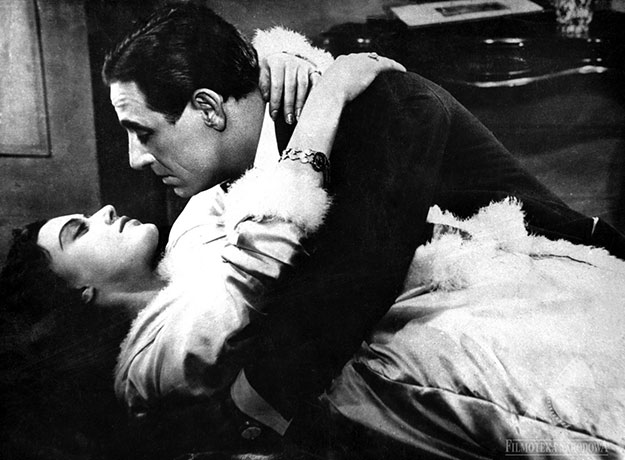
Strong Man
Film history and even social history look very different when forgotten figures like Priscilla Dean and Cristina Ruspoli re-emerge. An even more startling discovery is the career of Aloha Wanderwell, the subject of a talk by Heather Linville of the Academy Film Archive that was part of “Amazing Tales from the Archives,” a beloved annual program at the festival (where audiences routinely applaud for the film archives whose names appear at the heads of prints). Billed as “The World’s Most Widely Traveled Girl,” Wanderwell really was a girl, still in her teens, when she began barnstorming around the world in a caravan of Model T Fords, with a group that shot, processed, and screened their own travelogue films on the fly. Over six feet tall and immensely photogenic, Aloha radiates ease and intrepidity on screen, but she also worked behind the scenes directing and cutting the films, which are now being restored. The Academy is experimenting with pairing the silent footage with interviews Wanderwell recorded at the Smithsonian Institution, a gesture toward the live, unscripted commentary she would offer during screenings in the 1920s.
Likewise embracing the globe, the San Francisco Silent Film Festival brings together films, musicians, and experts from many countries. In this year’s program, two films from 1929 highlighted the internationalism of the silent era, a promiscuous cultural mingling that was about to end as sound imposed linguistic barriers. In the British film The Informer, based on a Liam O’Flaherty novel later adapted by John Ford, the Swedish actor Lars Hanson and the gorgeous Hungarian actress Lya de Putti play Irish characters under the direction of the German Arthur Robison. Unsurprisingly, the movie looks and feels more like a German strassefilm (i.e., “street film,” a group of lyrically gritty Weimar-era movies about life in the urban underbelly), with shadowy, menacing city streets and a noirish mood that pushes sexual jealousy and impulsive betrayal to the forefront. The BFI’s restoration (also on the slate this year at Il Cinema Ritrovato in Bologna) is ravishing; the print has a pictorialist smokiness and the deep purplish tint of a gold-toned photograph. Henryk Szaro’s A Strong Man, one of the few surviving silent films from Poland, features a Russian leading man (Grigoriy Chmara) and an Italian cinematographer (Giovanni Vitrotti), and shows the influence of both German expressionism and Russian constructivist theater. This feverishly intense and sharply acted film is drawn from the Polish modernist Stanislaw Przybyszewski’s story of a fame-obsessed failure who steals the manuscript of a novel by a dying friend and passes it off as his own, compounding his crime with adultery and attempted murder. It indicts a culture of shallow glitter and empty celebrity that encourages people to grab success at any cost, and that feels all too close to our own.
The festival’s lineup balanced “magic and mirth” (the title of an enchanting program of shorts presented by Serge Bromberg of Lobster Films in honor of the late preservationist David Shepard) with weightier fare. This year’s program was particularly strong in films about people struggling through the nightmare of history, their lives mangled by war or revolution, their societies shredded by political conflict or the juggernaut of modernity. Victor Sjöström’s A Man There Was (Terje Vigen, 1917) translates Ibsen’s patriotic poem of the same name—about a simple Norwegian boatman whose attempt to feed his family during a British blockade leads to his imprisonment and his family’s death—into a stark series of images that pit the man, also played by Sjöström, against a raging sea that seems to embody the implacable and indifferent forces of fate.
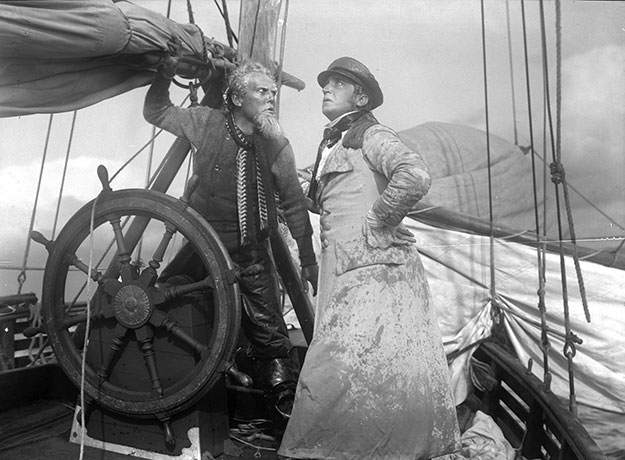
A Man There Was
Similarly, the searing Ukrainian film Two Days (Dva Dni, 1927) follows an ordinary man who, literally overnight, loses not only everything he loves but his faith in the social order to which he has devoted his life. A faithful elderly servant to an aristocratic family (Ivan Zamychkovskyi, in a performance that recalls Emil Jannings in The Last Laugh but is even more affecting), caught in the tumult of the Russian revolution, remains loyal to traditional feudal values despite his tender, conflicted love for his Bolshevik son. Director Heorhii Stabovyi shows he can put together a pulse-quickening montage with the best of them, but his intimate focus on one man’s private disaster tells a more complex and humanist tale of revolution than Eisenstein’s.
Battleship Potemkin (1925), however, was also on the program—perennially startling in its sheer beauty and visual force. Familiar films get a boost at the festival from exceptional, eclectic live music: Potemkin had percussive, atmospheric accompaniment by Sweden’s Matti Bye Ensemble that eschewed obvious musical choices, while Harold Lloyd’s The Freshman (1925) got a rousing, full-blooded orchestral score composed, conducted, and performed by students from the Berklee School of Music’s film scoring program. Other music ranged from the meticulous, charming period accompaniment of the Mont Alto Motion Picture Orchestra (which played for Filibus) to the edgier jazz-based live remix created by DJ Spooky (Paul D. Miller) for Oscar Micheaux’s complex, troubling Body and Soul (1925), starring Paul Robeson as a corrupt black preacher who preys on his flock. Master accompanists like Stephen Horne and Guenter Buchwald, both multi-instrumentalists, supply music so responsive it seems to breathe with the film, a matter less of timed sound effects than of full engagement. The immediacy of this sound befits the San Francisco Silent Film Festival, which the dynamic duo of artistic director Anita Monga and executive director Stacey Wisnia have made into an event where 90-year-old products of a defunct art form emerge as the most exciting discoveries of the moment.
Imogen Sara Smith is the author of In Lonely Places: Film Noir Beyond the City and Buster Keaton: The Persistence of Comedy, and has written for The Criterion Collection and elsewhere.



